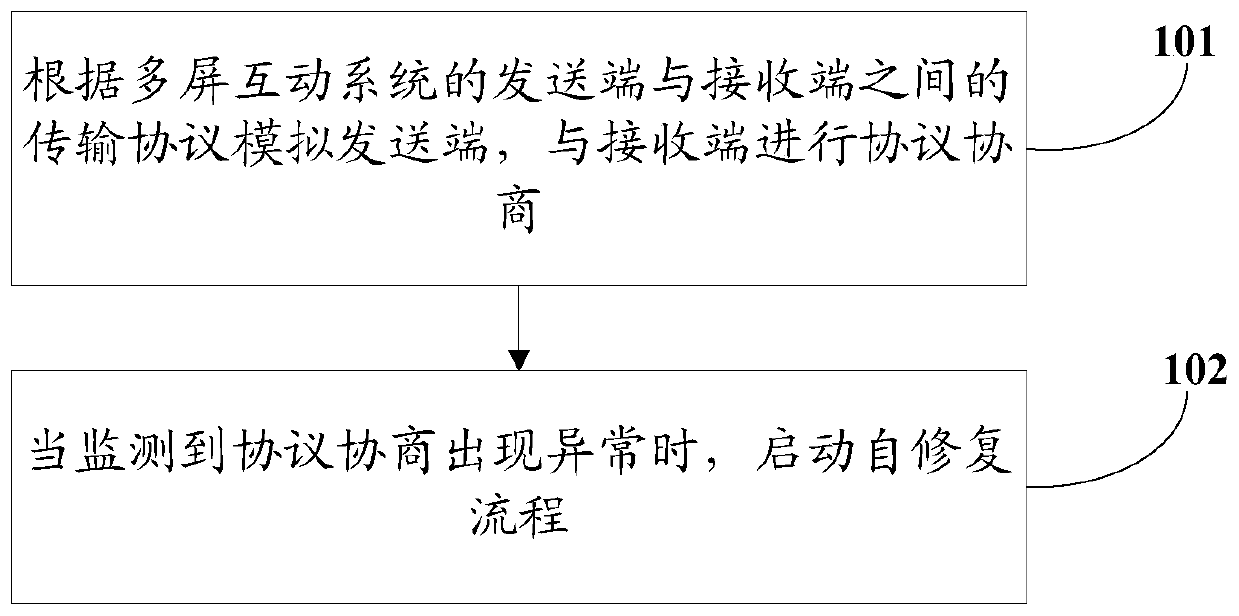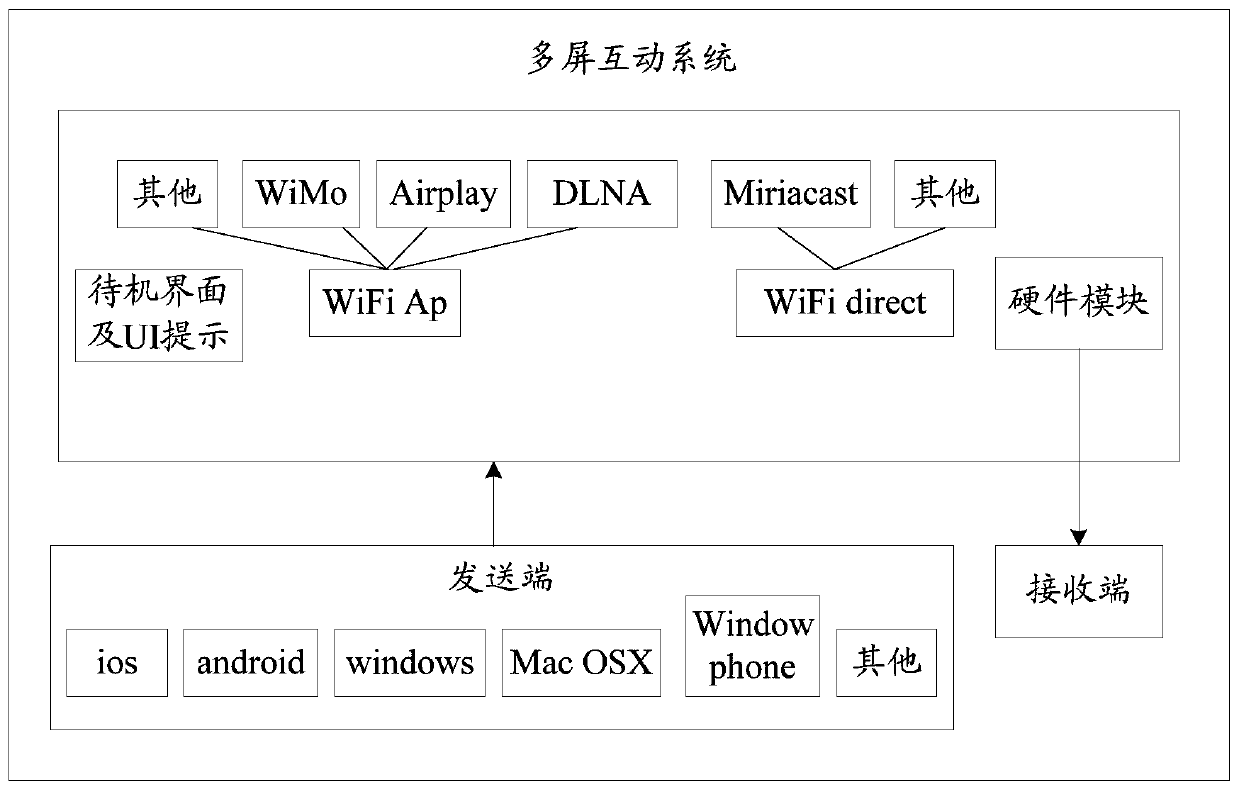Self-repairing method and device for a multi-screen interactive system
A multi-screen interaction and self-repair technology, which is applied in the self-repair field of multi-screen interactive systems, can solve problems such as artificial restarts and inconvenient use of equipment
- Summary
- Abstract
- Description
- Claims
- Application Information
AI Technical Summary
Problems solved by technology
Method used
Image
Examples
no. 1 example
[0042] see figure 1 , the first embodiment of the present invention provides a self-repairing method for a multi-screen interactive system, including:
[0043] Step 101, simulating the sending end according to the transmission protocol between the sending end and the receiving end of the multi-screen interactive system, and conducting protocol negotiation with the receiving end.
[0044] Wherein, the sending end may be a terminal device such as a mobile phone or a tablet computer; the receiving end may be a display or a projector or the like.
[0045] Usually, different operating systems support different transmission protocols; therefore, it is necessary to determine the transmission protocol used for multi-screen interaction between the sending end and the receiving end, and simulate the multi-screen interaction between the sending end and the receiving end; in this way, when there is no sending end In the case of participation, by simulating the sending end, there is multi...
no. 2 example
[0070] see image 3 , the second embodiment of the present invention provides a self-repairing device for a multi-screen interactive system, including:
[0071] The simulation module 301 is configured to simulate the sending end according to the transmission protocol between the sending end and the receiving end of the multi-screen interactive system, and perform protocol negotiation with the receiving end.
[0072] Usually, different operating systems support different transmission protocols; therefore, it is necessary to determine the transmission protocol used for multi-screen interaction between the sending end and the receiving end, and simulate the multi-screen interaction between the sending end and the receiving end; in this way, when there is no sending end In the case of participation, by simulating the sending end, there is multi-screen interaction with the receiving end to detect whether the protocol negotiation with the receiving end is normal.
[0073] The self-...
PUM
 Login to View More
Login to View More Abstract
Description
Claims
Application Information
 Login to View More
Login to View More - R&D
- Intellectual Property
- Life Sciences
- Materials
- Tech Scout
- Unparalleled Data Quality
- Higher Quality Content
- 60% Fewer Hallucinations
Browse by: Latest US Patents, China's latest patents, Technical Efficacy Thesaurus, Application Domain, Technology Topic, Popular Technical Reports.
© 2025 PatSnap. All rights reserved.Legal|Privacy policy|Modern Slavery Act Transparency Statement|Sitemap|About US| Contact US: help@patsnap.com



